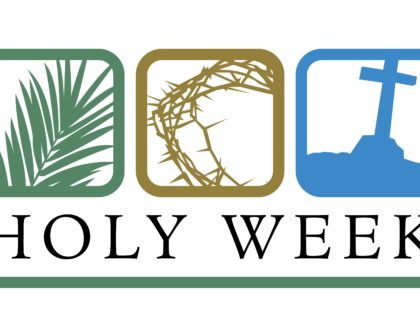Good Friday

by Pastor Gene
Today is Good Friday – an exhausting day.
While we remember it as the day that our Lord was crucified, it’s important to remember that the Jews reckoned the beginning of a new day at sundown. Therefore, Friday actually included all of the events of our Thursday evening: the Last Supper, Gethsemane, Judas’ kiss, the arrest of Jesus, Peter’s denial, the disciples’ fleeing, etc . . .
Good Friday is about death – not victory. It’s about sin, darkness, evil.
THE ARREST
Luke records three elements in the betrayal and arrest of Jesus.
First, Jesus knew that Judas would betray Him (Luke 22:47-48). A large crowd including the religious leaders (Luke 22:52) and soldiers (John 18:12) made their way towards Gethsemane to apprehend Him. They were led by Judas, one of the Twelve. The agreed upon sign of betrayal? A kiss.
Next, Jesus expressed compassion for others even in this hour of darkness (Luke 22:49-51). After Peter cut off the ear of Malchus, the high priest’s servant, Jesus healed him. I’ve always wondered about Malchus’ reaction to that healing. How it must of haunted him throughout his lifetime. I wonder if He came to know Jesus as his Savior because of it? We’ll know some day.
Finally, Jesus confronted the hypocrisy of the religious leaders who came to arrest Him (Luke 22:52-53). Why hadn’t they arrested Him during the day when He was teaching publicly – even in the Temple complex? The answer is no mystery: they were afraid of the reaction of the people. That’s why they needed to arrest Him discretely, secretly (Luke 19:48; 20:19; 22:2). So Jesus told them that this was their hour—the hour when darkness reigns (Luke 22:53). But remember something friends, an hour is not very long!
The entire ordeal of the Garden of Gethsemane must have been over by about 2:00 a.m. Jesus was about to endure six (unfair!) trials and they’d all be completed within hours. Our Lord would be on the cross by 9:00 a.m. Even the arrest in the Garden was illegal for it was (1) done at night and (2) was instigated by a hired accuser.
SIX TRIALS
Jesus faced six trials in all: three before Jewish officials, and three before Roman officials.
Trial #1: Jesus was first brought before Annas, the former high priest and father-in-law of the current high priest Caiaphas. Peter followed from the shadows, even though doing so could have cost him his life.
Trial #2: Jesus was brought before the current high priest Caiaphas. During the trial Jesus was found guilty of blasphemy. The guards blindfolded Him, spat on Him, and struck Him in the face with their fists – all highly illegal according to their own laws.
Trial #3: Soon after daybreak, Jesus was tried before the Pharisees and Sadducees who made up the Sanhedrin, the Jewish nation’s official judicial body. Hypocritically, the council met at daybreak since it was illegal to assemble at night. Before the Sanhedrin, Jesus affirmed His authority as Messiah. He was the One who would soon be seated at the right hand of His Father in Heaven – that is, after His death, burial resurrection, and Ascension. He was once again found guilty of blasphemy, an offense punishable by death. But, although the Sanhedrin could render a guilty verdict, they were not allowed to impose the death penalty. Only Rome could do that. So they handed Jesus over to Pilate.
Trial #4: The Jewish leaders falsely accused Jesus before Pilate, governor of Judea. They accused Him of opposing Caesar’s taxes, even though the Lord had said exactly the opposite (Luke 20:25). Furthermore, they worded the blasphemy charge so as to paint Jesus as a political insurrectionist (Luke 23:2). After considering the case, Pilate stated clearly that Jesus was innocent. However, since the Jewish authorities insisted upon His being guilty, Pilate sent Jesus to be judged by Herod the “tetrarch of Galilee” who just so happened to be in Jerusalem at that time.
Trial #5: While Jesus had spoken plainly to Pilate and had declared to him who He was, He repeatedly refused to answer Herod – an obscene clown who simply wanted to see Him perform some miracle (Luke 23:8-12). Herod mocked Jesus – dressed Him up as a false king – and sent Jesus back to Pilate without passing any judgment on the case.
Trial #6: So Jesus went back to Pilate for sentencing (Luke 23:13-25, Matthew 27:15-26; Mark 15:6-15; John 18:39-19:16). Again, Pilate said that he found no guilt in Him. He told the people that the best he could do would be to punish and release Him. But the Jews continued to insist that He be executed! So Pilate gave the people the choice: he would either release Jesus or a known criminal named Barabbas. Incredibly, they chose the murderer over their Messiah. Pilate affirmed Jesus’ innocence a third time, then gave in to the demands of the crowd and condemned Jesus to a horrible death by crucifixion.
During this trial, Jesus was severely beaten and scourged by the Roman soldiers. He received 39 lashes with a Roman whip – an ordeal that often resulted in death. The soldiers placed a purple robe upon His shoulders and a crown of thorns upon His head. They mocked Him saying, “Hail, King of the Jews!” They spit at Him, slapped Him and hit Him with a rod.
Eventually, they led Him to Golgotha, the Place of the Skull, to be crucified.
THE CROSS
Jesus is led by the soldiers through the city and up the hillside to Golgotha. He is forced to carry His own cross. He falls under its weight and, somewhere along the route, they force Simon of Cyrene to carry it for Him. Around 9:00, He is nailed to the cross – crucified along with two thieves. Offered wine mixed with gall, He refuses. Roman soldiers cast lots for his clothes – His only earthly possessions. Meanwhile, He intercedes with the Father, asking forgiveness for those who are killing Him.
Some in the crowd stare at Him in amazement. Others mock. Some shake their heads and dismiss Him altogether. Family, friends and followers watch Him suffer from a distance.
From noon to 3:00 in the afternoon, darkness covers the entire land. Jesus tells His mother Mary to consider John the apostle as her own son; He tells John to care for His mother.
Then, the unthinkable. The Savior of the world was forsaken by His Father as He bore our sins. He cried out: “Eli Eli, lama sabachthani” – “My God, My God, why have You forsaken Me?” Then, later: “It is Finished!” And, finally: “Father, into Your hands I commit My spirit.”
A spear is thrust into His side. He is dead.
The veil in the Temple that separates the Holy of Holies from the Holy Place is miraculously torn in two from the top to the bottom. An earthquake opens some of the graves in the city. Shockingly, some of the dead are resuscitated back to life as a witness to the momentous events that have occurred. Even one of the Roman Centurions guarding Jesus acknowledged that He was the Son of God.
The Jews want Jesus off the cross before the Passover begins (around 6 pm). The Roman soldiers break the legs of all those who have been crucified in order to expedite their death. Jesus, though, is already dead. His legs are not broken.
Joseph of Arimathea, a rich Sanhedrin member, asks Pilate for permission to inter the body of Jesus in his own tomb. Jesus’ body is anointed, wrapped in fine linen and buried in the new tomb that Joseph had made for himself.
Good Friday is an exhausting day.
PRAYER POINT
When they came to arrest Jesus in the Garden of Gethsemane, He said a remarkable thing to them: “This is your hour, and the power of darkness.”
So then, this is what the hour and the power of darkness looks like – shrouded in injustice, lying, cheating, conniving, bribery, scapegoating and murder. And while the darkness was advancing, the believers closest to the Lord were fast asleep. Later they’d deny Him with their words or actions.
I’ll not leave you with an encouraging thought here – that’s for Sunday. Today we need to think about this, own this. We live in a world where darkness reigns and will do so for a short while longer. And, truth be known, we’re found “asleep while on watch” far too often. We cannot take that for granted. We cannot let ourselves become familiar with it. We cannot be OK with it.
Especially today. We need to think about the sin that killed our Lord, our Master, our Jesus.
The Apostle wrote the following to believers in Ephesians 5:14-17: “Awake, O sleeper, and arise from the dead, and Christ will shine on you. Look carefully then how you walk, not as unwise but as wise, making the best use of the time, because the days are evil. Therefore do not be foolish, but understand what the will of the Lord is. And do not get drunk with wine, for that is debauchery, but be filled with the Spirit.”
Let’s ask the Lord’s help to do just that.
Indeed, Jesus said, “This is your hour, and the power of darkness.” But, again, an hour is not very long.
Watching and praying,
Gene
| Event | Location | Matthew | Mark | Luke | John |
| Jesus and disciples assemble for the Passover feast | Jerusalem | 26:20 | 14:17 | 22:14-16 | 13:1 |
| Disciples strive over greatness | Jerusalem | — | — | 22:24-30 | — |
| Jesus washes the disciples’ feet | Jerusalem | — | — | — | 13:2-17 |
| Jesus identifies His betrayer | Jerusalem | 26:21-25 | 14:18-21 | 22:21-23 | 13:18-30 |
| Jesus institutes the Lord’s Supper | Jerusalem | 26:26-29 | 14:22-25 | 22:15-20 | — |
| The commandment of love | Jerusalem | — | — | — | 13:31-35 |
| Jesus predicts Peter’s denial | Jerusalem | 26:31-35 | 14:27-31 | 22:31-38 | 13:36-38 |
| Jesus’ discourse in upper room | Jerusalem | — | — | — | 14:1-30 |
| Sang hymn and departed upper room | Jerusalem | 26:30 | 14:26 | — | 14:31 |
| Jesus’ discourse on way to Gethsemane | Kidron valley | — | — | — | 15:1-16:33 |
| Jesus’ prayer for His disciples | Kidron valley | — | — | — | 17:1-26 |
| Jesus’ prayers in Gethsemane | Mt. of Olives | 26:36-46 | 14:32-42 | 22:39-46 | 18:1 |
| Jesus is betrayed and arrested | Mt. of Olives | 26:47-56 | 14:43-52 | 22:47-53 | 18:2-12 |
| Jesus is brought before Annas | Jerusalem | — | — | — | 18:13-14 |
| Jesus is brought before Caiaphas | Jerusalem | — | — | — | 18:24 |
| Jesus is condemned and mistreated by Sanhedrin through the night | Jerusalem | 26:57-68 | 14:53-65 | 22:54, 66-72 | — |
| Peter denied Jesus three times | Jerusalem | 26:58, 69-75 | 14:54, 66-72 | 22:54-62 | 18:15-18, 25-27 |
| Sanhedrin formally condemned Jesus | Jerusalem | 27:1 | 15:1 | 22:66-71 | — |
| Judas went out to commit suicide | Field of Blood | 27:3-10 | — | — | — |
| Jesus appeared before Pilate | Jerusalem | 27:2, 11-14 | 15:1-5 | 23:1-7 | 18:28-38 |
| Jesus appeared before Herod | Jerusalem | — | — | 23:6-12 | — |
| Jesus appeared before Pilate again | Jerusalem | 27:15-23 | 15:6-14 | 23:13-22 | 18:39-40 |
| Jesus scourged and mocked by Romans | Jerusalem | 27:27-31 | 15:16-19 | — | 19:1-3 |
| Pilate consented to Jesus’ death | Jerusalem | 27:22-26 | 15:12-15 | 23:20-25 | 19:4-16 |
| Jesus led away to be crucified | Calvary | 27:31-34 | 15:20-23 | 23:26-32 | 19:16-17 |
| Jesus on the cross: first three hours | Calvary | 27:35-44 | 15:24-32 | 23:33-43 | 19:18-24 |
| Jesus on the cross: last three hours | Calvary | 27:45-50 | 15:33-37 | 23:44, 46 | 19:25-30 |
| Miracles accompanying crucifixion | — | 27:51-56 | 15:38-41 | 23:45, 47-49 | — |
| Joseph buried the body of Jesus | — | 27:57-61 | 15:42-47 | 23:50-55 | 19:31-42 |
(Chart constructed by Pastor William Stewart)
Recommended Posts
Holy Saturday
March 30, 2024

Good Friday
March 29, 2024

Maundy Thursday
March 28, 2024
Comments
Comments are closed.

Darkness is all around in our world but—- Jesus King of Kings and Lord of Lords will return!!